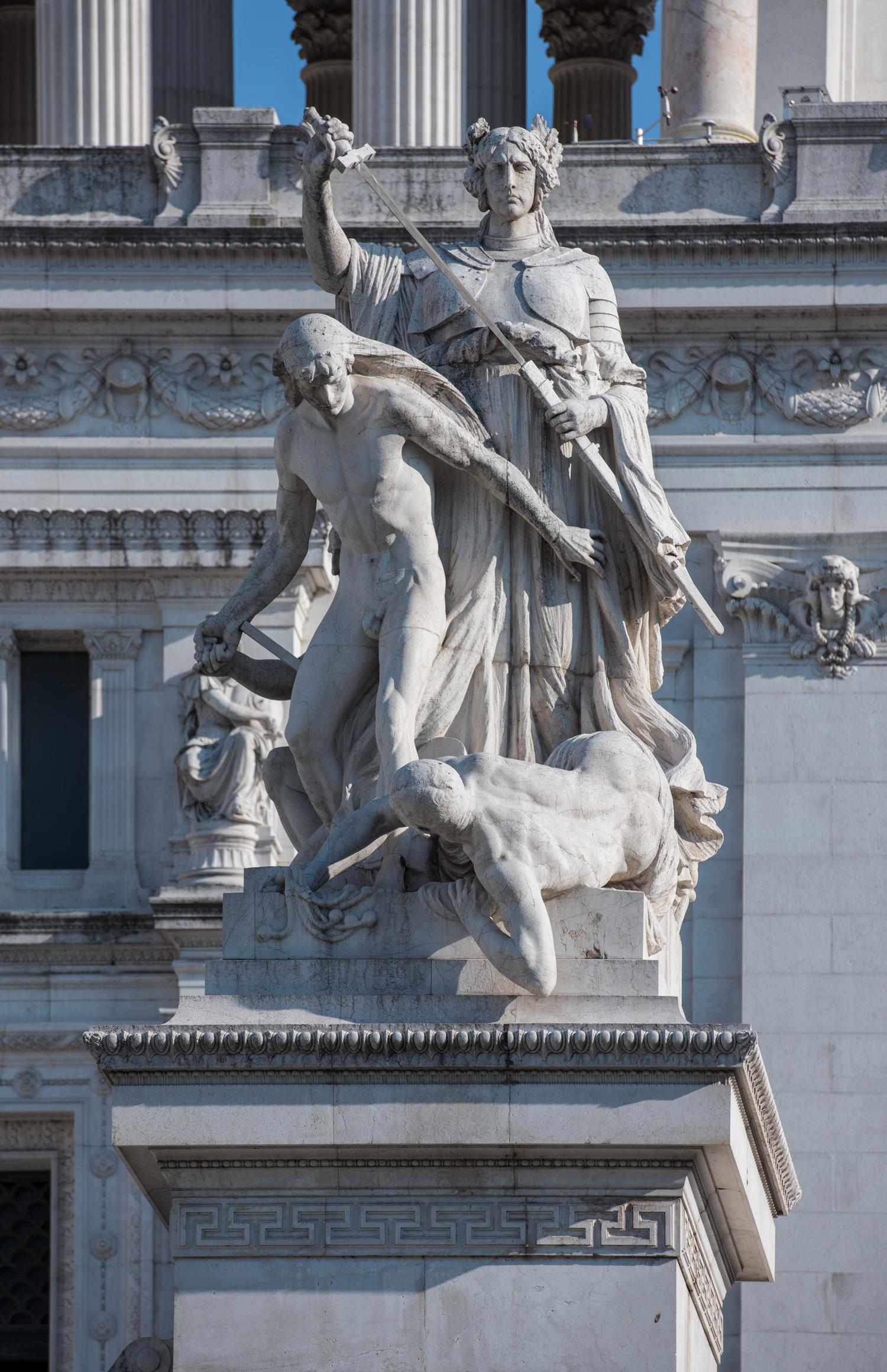Four of the best-known artists in Italy at the beginning of the twentieth century are called upon to represent the founding values of the Kingdom of Italy
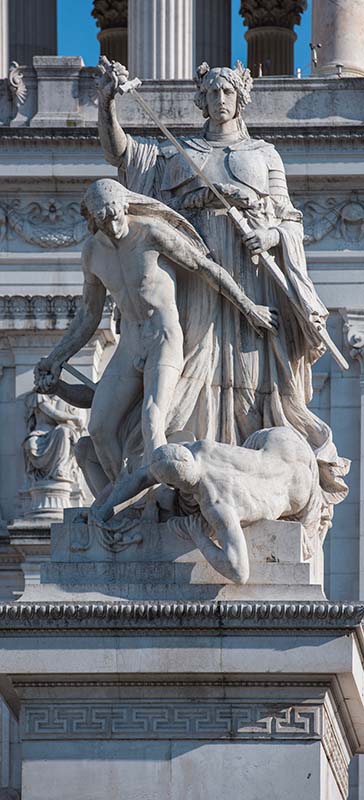
The first balustrade of the Monument houses four marble groups: they depict The Strength, The Concord, The Sacrifice and The Right, that is, the founding values of the young Kingdom of Italy. The authors are four of the best-known sculptors in the Country at the beginning of the twentieth century: Augusto Rivalta (1837-1925) and Lodovico Pogliaghi (1857-1950), Leonardo Bistolfi (1859-1933) and Ettore Ximenes (1855-1926), Rivalta and Pogliaghi were awarded the work in 1906, Bistolfi and Ximenes in 1907: the first three handed over the work in 1911, Ximenes in 1912.
Augusto Rivalta from Piedmont represents The Force as a young man with powerful muscles with a spear in one hand and a small, round shield, the so-called 'Parma', in the other, an evident reference to the power of ancient Rome. At his sides, a soldier in medieval costume with a dart and a crossbow depicts The Military Energy; on the right, a modern worker leaning on a pickaxe is The Civil Energy.
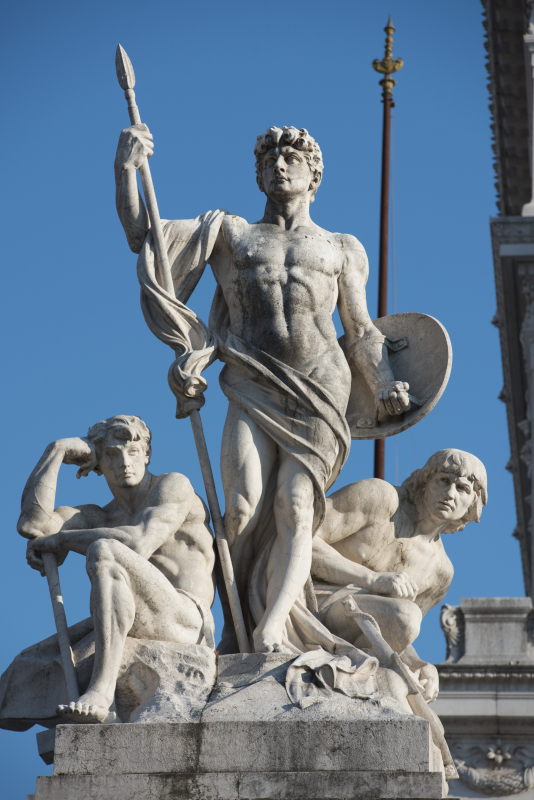
Lodovico Pogliaghi from Milan represents The Concord with cornucopia, a symbol of prosperity that seals the agreement between The Principality, a man of advanced age, and The People, instead depicted as a young man. The sculpture is completed at the bottom with the personification of The Family, a woman who is about to breastfeed a baby.
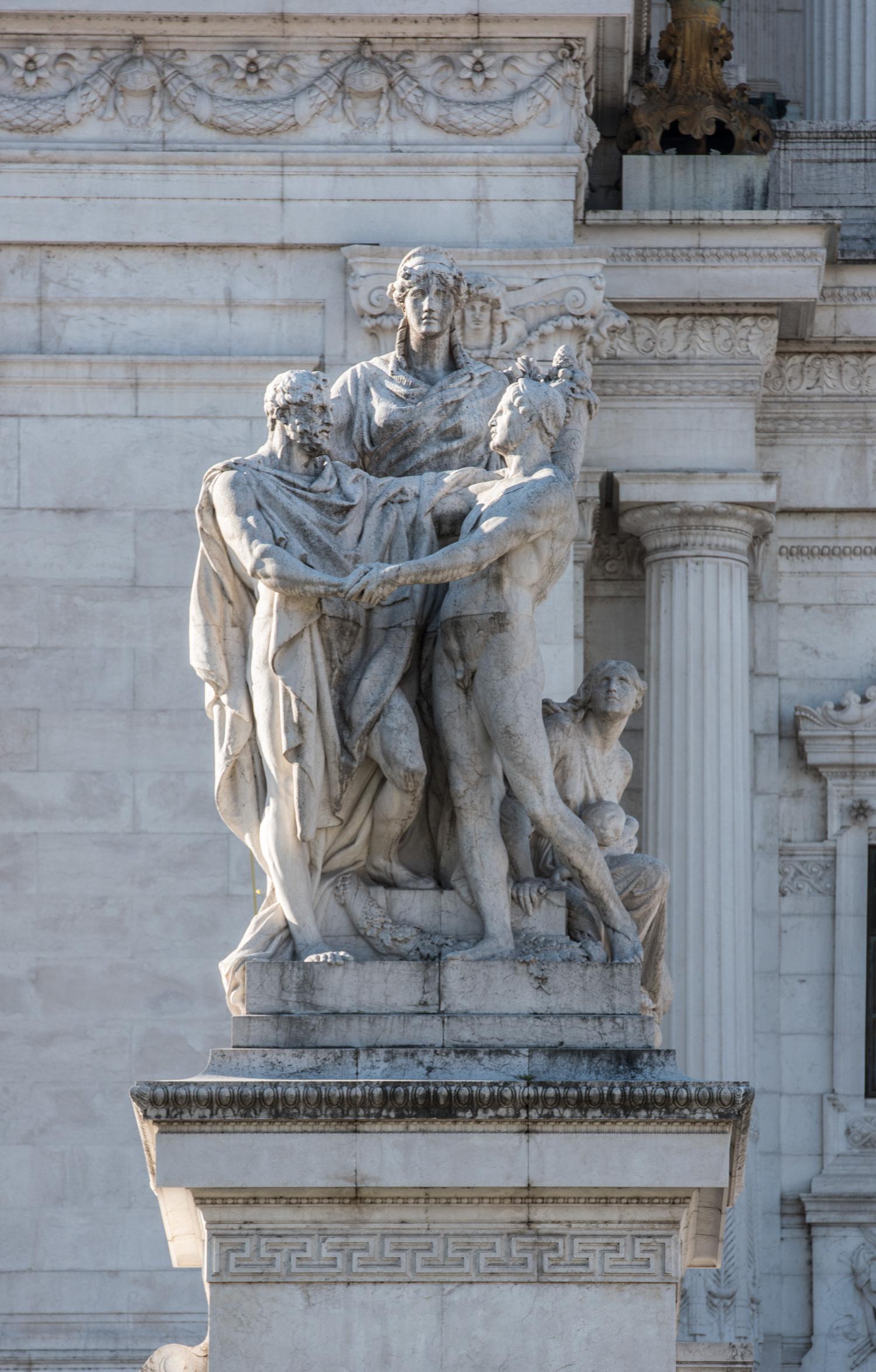
Leonardo Bistolfi from Piedmont depicts The Sacrifice as a dying soldier who receives a kiss from The Genius of Liberty.
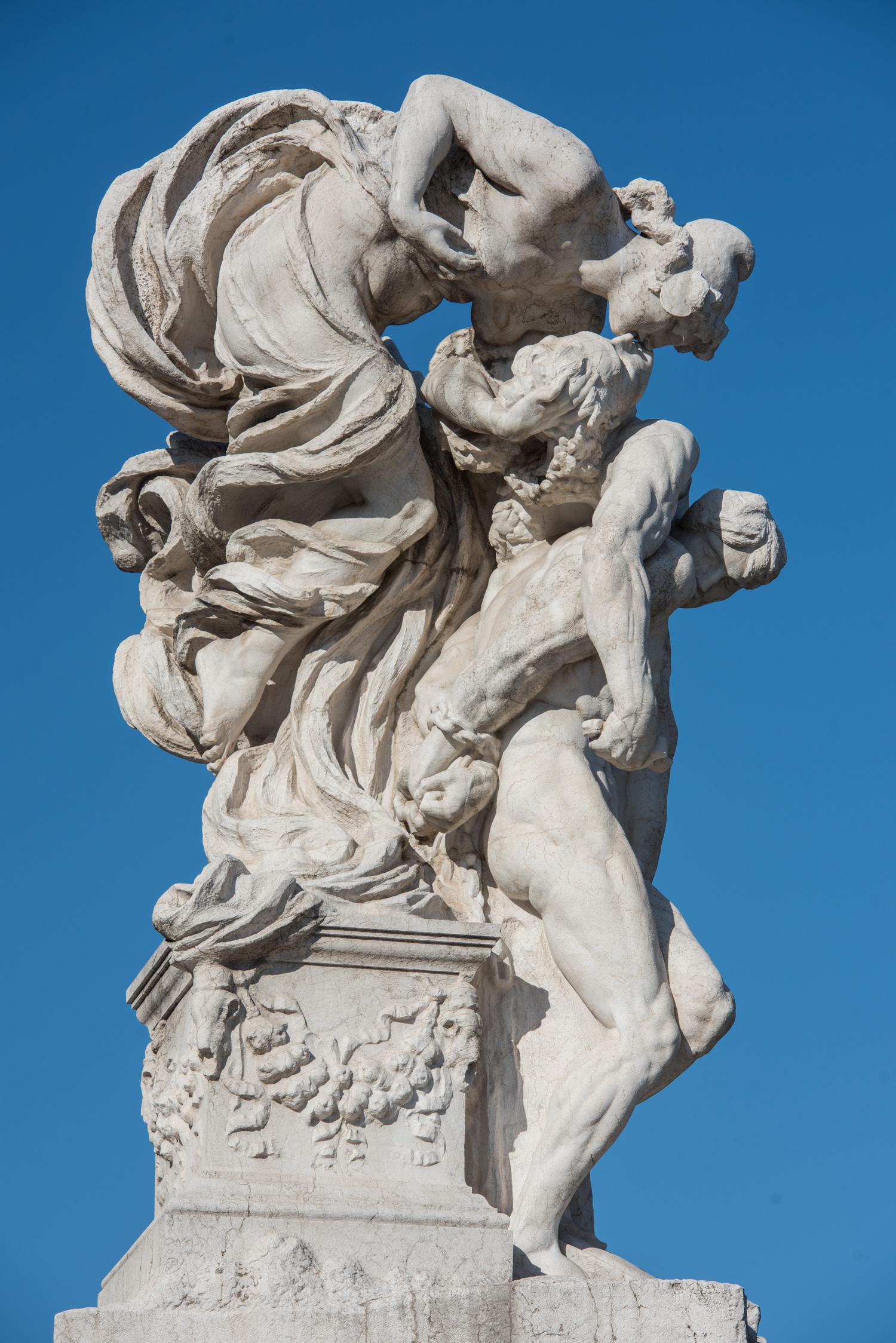
The Right by the Sicilian Ximenes is a naked young man, who dominates from above The Tyranny lying at his feet armed with a scourge - i.e. a whip - now defeated and resigned. In the upper part, Freedom stands out, in the act of re-sheathing her sword in its scabbard. Behind these three figures there is a fourth: it represents The People, who are reflected and find their own identity in their respect for natural law.
